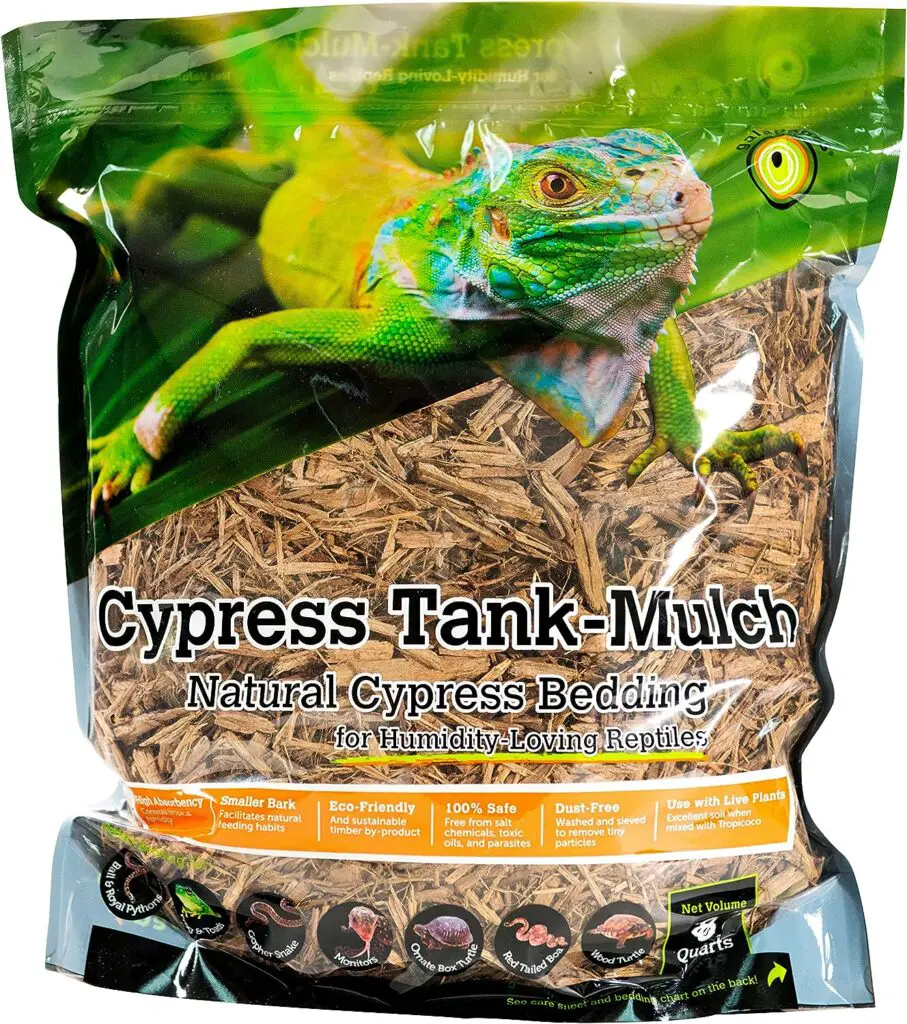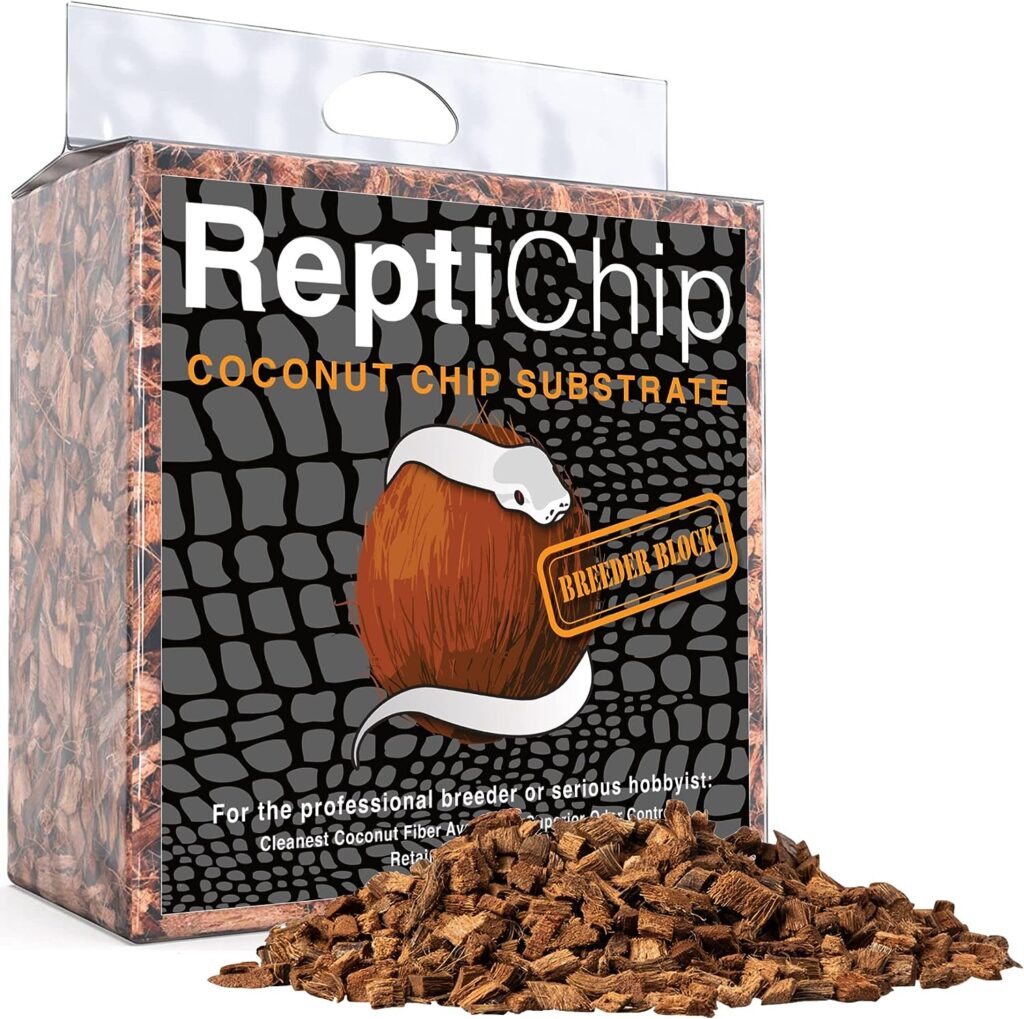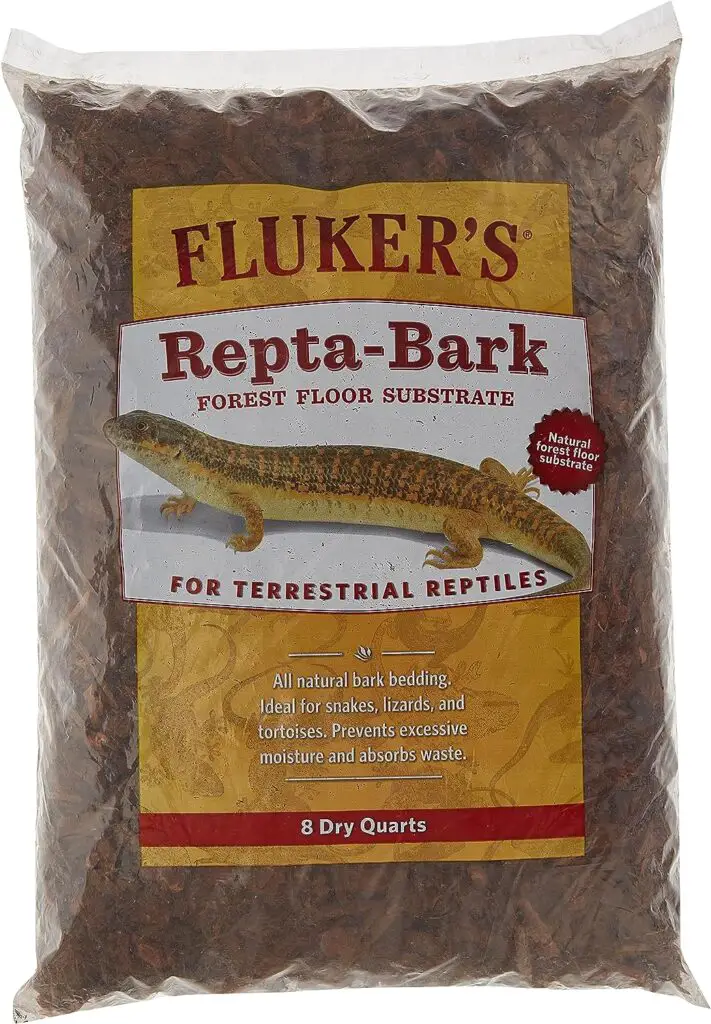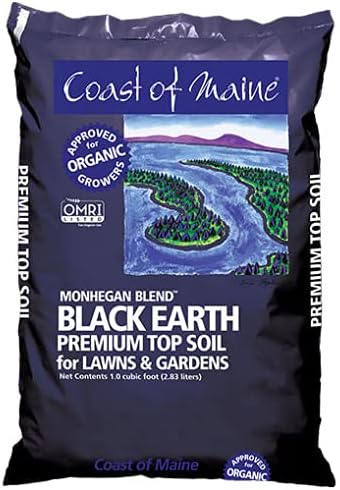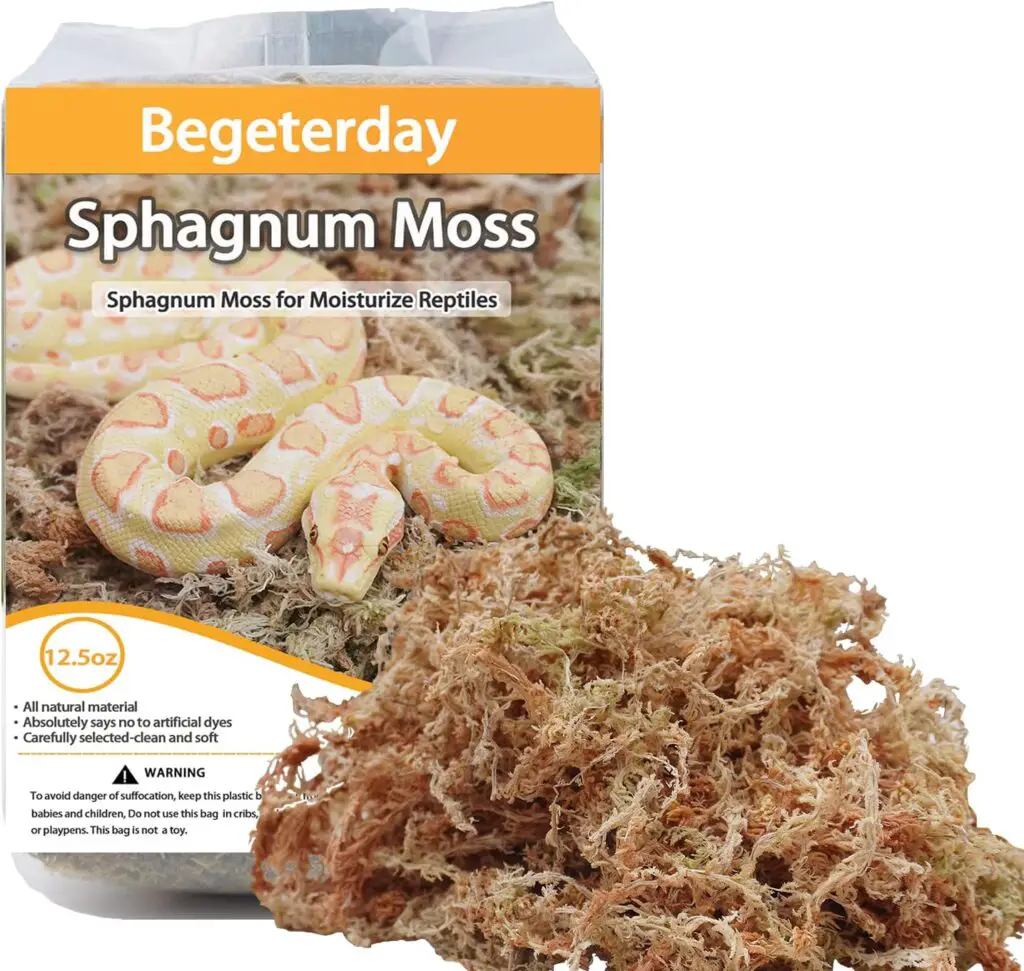Our list of the best substrate options for Box Turtles.
#1. ReptiChip Compressed Coconut Chip Substrate – Best Overall
#2. Galápagos Cypress Tank Mulch Forest Floor Bedding – Best Cypress Mulch
#3. Fluker’s Repta-Bark – Best Digging Material
#4. Coast of Maine Organic Top Soil – Best Natural Habitat Imitator
#5. Begeterday Natural Sphagnum Moss – Best Moisture Retaining
A brief overview of box turtles and their habitat needs.
Box turtles, belonging to the genus Terrapene, are fascinating reptiles known for their distinctive features and captivating behavior. These land-dwelling creatures can be found in North America, with different species inhabiting various regions.
Their unique ability to withdraw into their shells for protection has earned them the name “box turtles.” In their natural habitat, box turtles prefer diverse environments that range from forests and grasslands to meadows and marshes.
These habitats offer a combination of sunlit areas for basking and shaded spots for retreat during extreme temperatures. The availability of water sources such as ponds, streams, or even shallow puddles is crucial for hydration and soaking.
Understanding the natural habitat of box turtles is essential when considering their captive care. By replicating certain elements of their native environment within an enclosure or terrarium, we can provide a suitable setting that promotes their well-being. Here, we will discuss the best substrate options for box turtles.
Best Substrate Options for Box Turtle:
#1 Cypress Mulch
Cypress mulch is a popular substrate choice for box turtles due to its ability to hold moisture, provide insulation, and mimic the natural forest floor.
It is made from shredded cypress trees and offers a soft texture that allows box turtles to dig and burrow comfortably. The natural fragrance of cypress mulch also adds a pleasant aroma to the enclosure.
When using cypress mulch as a substrate, it is important to ensure that it is free from any additives or chemicals that could harm your box turtle.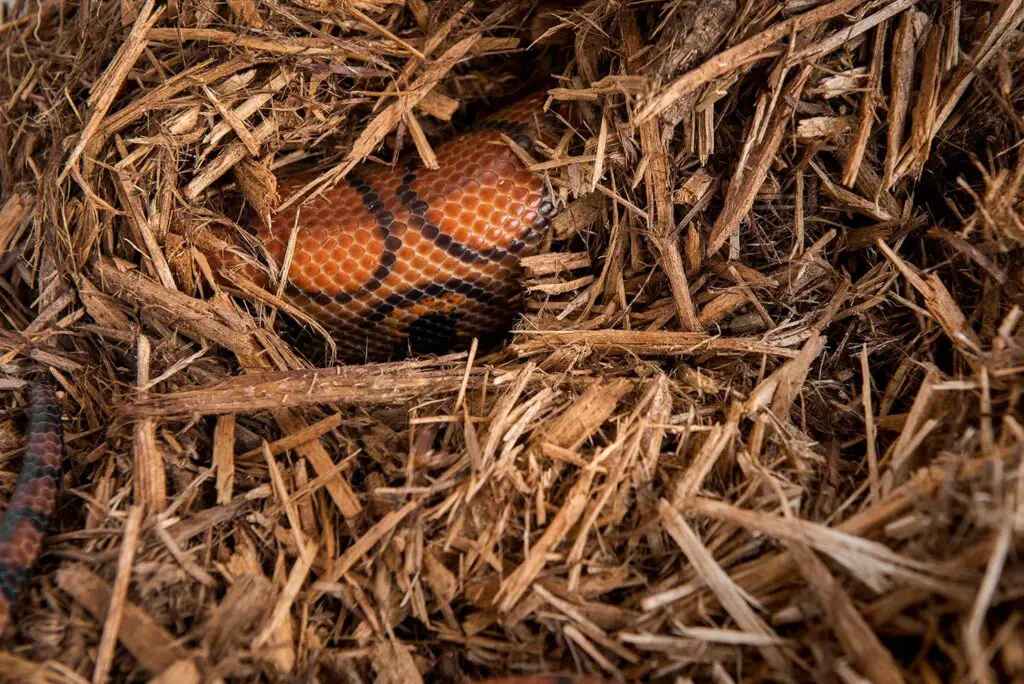
#2 Coconut Coir
Coconut coir, derived from coconut husks, is an excellent substrate option for box turtles. Its fibrous texture retains moisture well, providing the necessary humidity levels required for these reptiles’ health.
Coconut coir also promotes natural digging behavior in box turtles, allowing them to exhibit their instinctual behaviors in captivity. Additionally, this substrate option is environmentally friendly and sustainable as it comes from renewable sources.
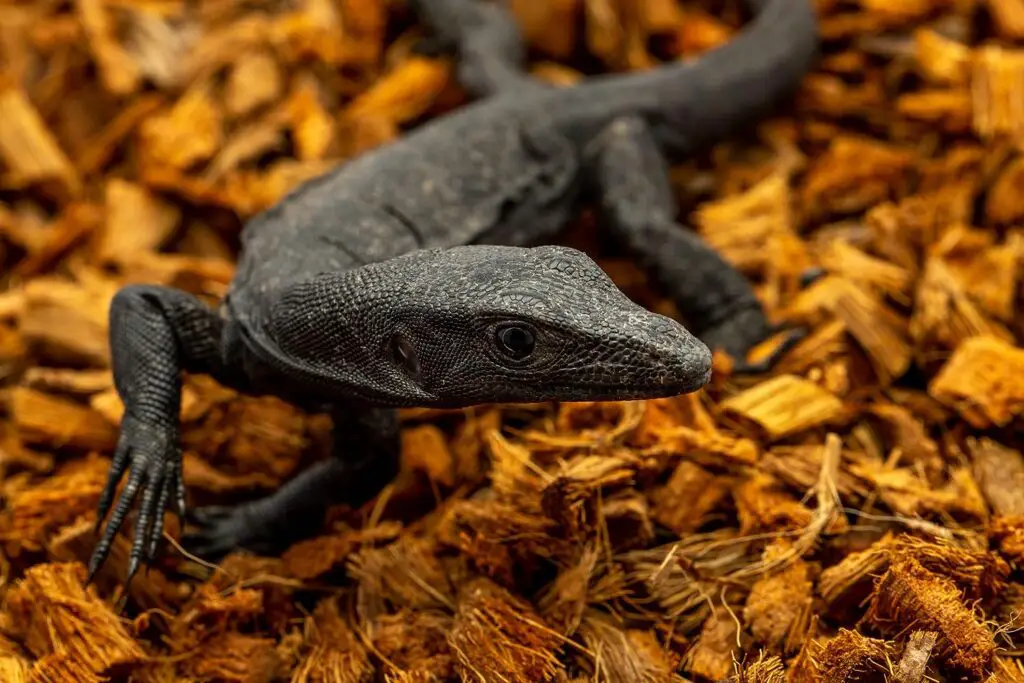
#3 Orchid Bark
Orchid bark serves as an effective substrate choice for box turtles as it provides both insulation and moisture retention properties.
This type of bark comes from various fruit trees like apple or peach trees and creates a diverse terrain inside the enclosure, allowing your box turtle to explore different textures and engage in natural behaviors such as climbing over logs or hiding under them.
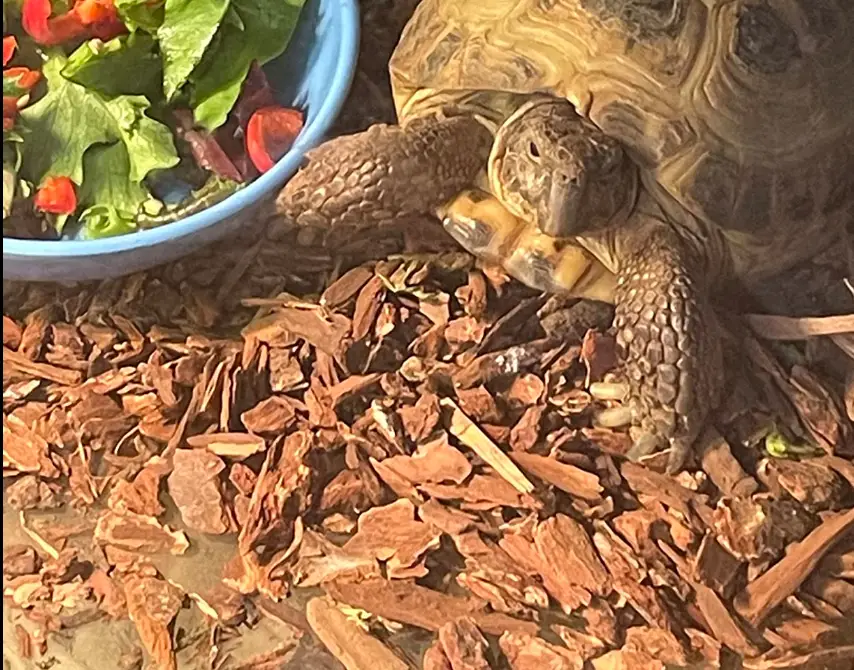
#4 Topsoil (without additives):
Using topsoil without any additives can be an affordable yet practical option for creating a suitable substrate environment for your box turtle. It closely resembles the soil found in their natural habitat and helps maintain proper humidity levels while allowing them to dig and bury themselves comfortably.
Ensure that the topsoil you choose does not contain fertilizers or pesticides that could be harmful if ingested by your pet.
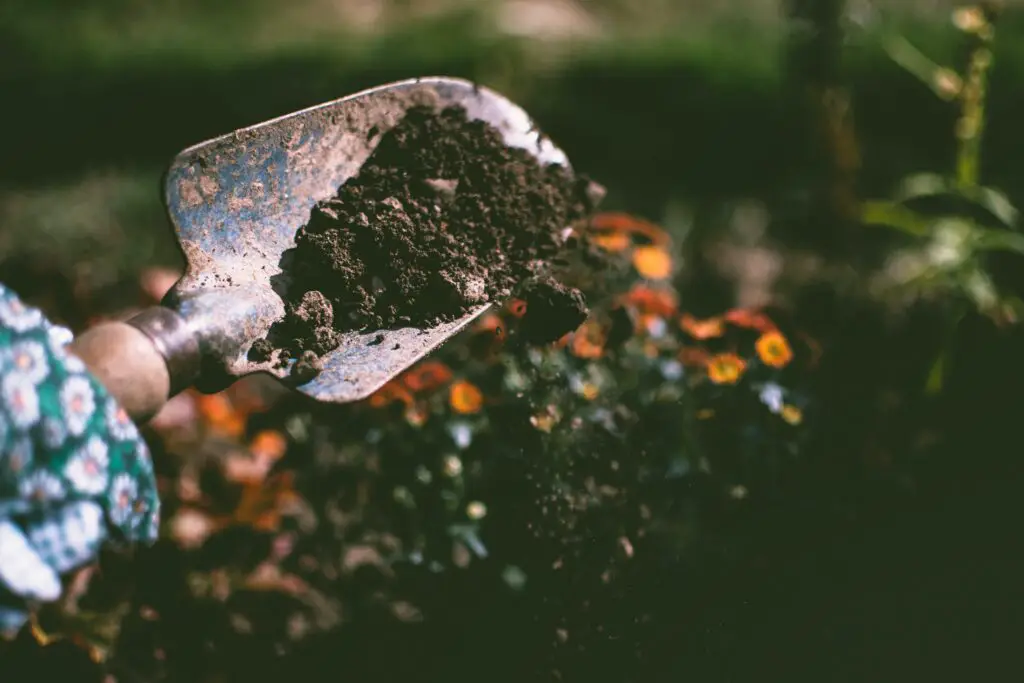
#5: A mix of Sphagnum Moss and Coconut Husk:
Combining sphagnum moss and coconut husk creates a substrate blend that offers excellent moisture retention and enhances the overall humidity levels in the enclosure. The sphagnum moss provides a soft, cushiony surface for your box turtle to walk on, while the coconut husk adds structure and durability to the substrate.
This mixture also encourages natural digging behaviors and allows for easy maintenance by retaining moisture without becoming overly soggy. When choosing a substrate for your box turtle, it is vital to consider its natural habitat requirements.
Providing a suitable substrate not only ensures their physical comfort but also promotes their mental well-being by allowing them to engage in instinctual behaviors like digging, burrowing, and exploring. Remember to monitor the humidity levels regularly and make adjustments as necessary to maintain optimal conditions within the enclosure.
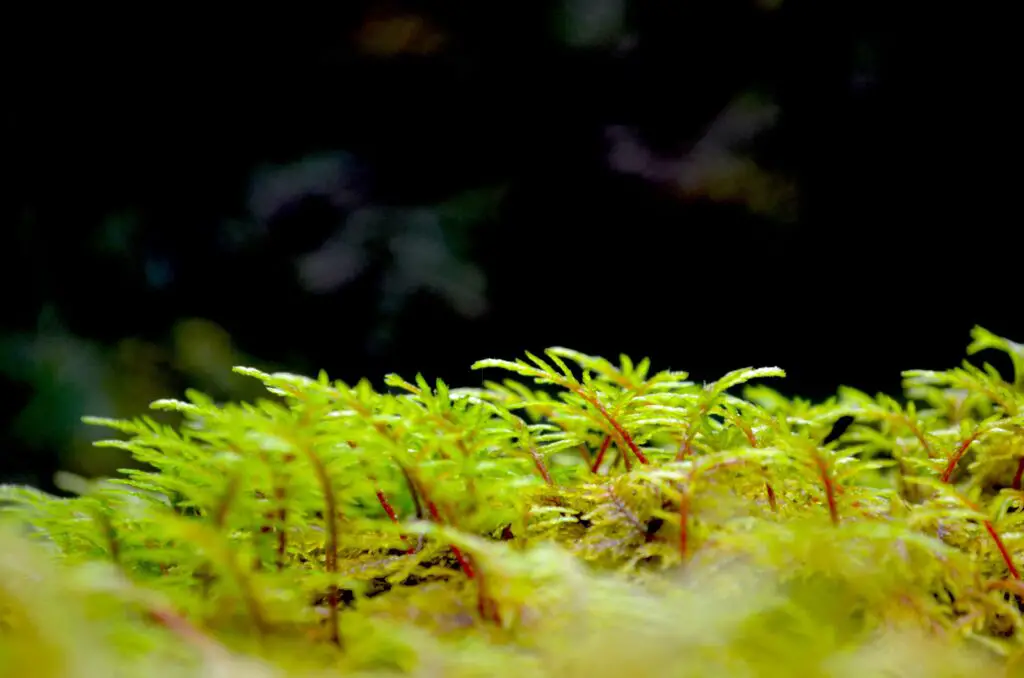
Cypress Mulch
Cypress mulch is a popular choice as a substrate for box turtles due to its numerous benefits. Derived from the bark of cypress trees, this type of mulch provides an ideal environment for box turtles in captivity. One of the main advantages of cypress mulch is its ability to retain moisture.
This feature allows for maintaining the necessary humidity levels within the enclosure, which is vital for the health and well-being of box turtles. In addition to its moisture retention properties, cypress mulch also offers excellent comfort and encourages natural behaviors in box turtles.
With their affinity for digging and burrowing, these reptiles appreciate a soft substrate that allows them to express their natural instincts. Cypress mulch provides just that, offering a suitable texture that enables box turtles to engage in these activities comfortably.
Furthermore, using cypress mulch as a substrate promotes waste management and cleanliness within the enclosure. The loose structure of this type of mulch makes it easy to spot-clean any soiled areas regularly while maintaining overall cleanliness.
It also helps minimize odor by effectively absorbing excess moisture associated with waste products. Cypress mulch has another advantage in its longevity compared to some other substrates commonly used with box turtles.
As it breaks down gradually over time, it contributes organic matter to the enclosure’s ecosystem, enriching the soil quality for plants if present. This gradual decomposition also means that cypress mulch does not require frequent replacement but rather occasional topping up or refreshing when necessary.
It is important to note that when using cypress mulch as a substrate for box turtles, it is crucial to select an option without any additional additives or chemicals. Natural and untreated cypress bark will ensure the safety and well-being of your turtle companion by eliminating potential exposure to harmful substances.
Overall, choosing cypress mulch as a substrate for your box turtle enclosure can provide numerous benefits ranging from moisture retention and comfort to waste management and longevity. By mimicking their natural environment and promoting their natural behaviors, cypress mulch can contribute significantly to the overall health and happiness of your box turtle.
Coconut Coir
Coconut coir, also known as coconut fiber, is an increasingly popular substrate choice for box turtles.
It is made from the husk of coconuts and provides several benefits that make it a valuable option for box turtle enclosures. The fibrous texture of coconut coir allows for excellent moisture retention while also promoting proper drainage.
This feature makes it ideal for maintaining the necessary humidity levels in the enclosure, which is crucial for the health and well-being of box turtles. In addition to its moisture-retaining properties, coconut coir offers various other advantages that contribute to creating a suitable environment for box turtles.
The fibrous nature of this substrate allows box turtles to exhibit their natural behavior of digging and burrowing. By doing so, they can create hiding spots or nest areas within their enclosure, which promotes physical and mental stimulation.
Furthermore, coconut coir does not compact easily over time. This means that as your box turtle digs or burrows into the substrate, it will retain its fluffy texture rather than becoming densely packed.
This consistency helps prevent accidental ingestion of indigestible material by the turtle while burrowing, reducing the risk of impaction. Coconut coir also has a neutral pH level and does not contain any harmful chemicals or additives that could potentially harm your box turtle’s health.
It is an all-natural product that provides a safe and comfortable substrate for box turtles to traverse on. When using coconut coir as a substrate for your box turtle’s enclosure, it is essential to maintain proper moisture levels consistently.
Regularly misting the substrate with water will ensure adequate humidity without making it overly damp or soggy. Additionally, monitoring the humidity levels using a hygrometer will help you adjust accordingly.
Overall, coconut coir offers many advantages as a substrate choice for box turtles due to its moisture retention capabilities, ability to support natural digging behavior, safety profile without harmful chemicals or additives, and resistance to compaction. By using coconut coir as part of your box turtle’s enclosure setup, you provide them with a comfortable and enriching environment that mimics their natural habitat.
Orchid / Orchard Bark
Orchard bark, derived from the bark of trees such as apple, cherry, and peach, is a popular option when it comes to selecting the best substrate for box turtles.
This type of substrate offers several advantages that cater to the specific needs and preferences of these fascinating reptiles. One of the primary benefits of orchard bark is its ability to retain moisture while still allowing for proper drainage.
Box turtles require a certain level of humidity in their enclosure to maintain healthy skin and respiratory function. The porous nature of orchard bark helps to regulate moisture levels effectively, preventing stagnant water buildup and reducing the risk of bacterial or fungal growth that could harm your box turtle.
In addition to its moisture-retaining properties, orchard bark provides an ideal surface for box turtles to engage in natural behaviors such as digging and burrowing. These activities are essential for exercise and mental stimulation, promoting overall well-being in captivity.
The texture and structure of orchard bark allow box turtles to easily manipulate the substrate without it becoming compacted or losing its integrity over time. Furthermore, orchard bark contributes significantly to maintaining cleanliness within an enclosure.
Its loose composition allows waste matter to sink beneath the surface rather than remaining on top, minimizing odor and promoting a more hygienic environment for your box turtle. Regular spot cleaning can be done easily by removing any visible waste with a reptile scooper while leaving the rest undisturbed.
When using orchard bark as substrate for your box turtle’s habitat, it is essential to ensure that you choose organic options free from pesticides or chemicals. Avoid using commercially available products intended for decorative purposes in gardens or landscaping projects as these may have been treated with substances harmful to reptiles.
To create an optimal blend with orchard bark as a base substrate material, some keepers choose to incorporate other components such as topsoil or coconut coir into their mix. This combination provides additional texture variations and enhances the overall moisture retention capabilities of the substrate.
Experimenting with different ratios can help you find the perfect balance for your box turtle’s specific needs and preferences. Orchard bark serves as an excellent substrate choice for box turtles due to its moisture-regulating properties, suitability for natural behaviors, ease of maintenance, and availability.
When used in combination with other compatible materials, it can create a comfortable and enriching environment that mimics the box turtle’s natural habitat. By providing your box turtle with a well-thought-out substrate like orchard bark, you are contributing to their overall health and ensuring a fulfilling life in captivity.
Topsoil (without additives)
When considering the best substrate for box turtles, topsoil without additives emerges as a highly suitable option that closely mimics their natural environment. Box turtles are native to various terrestrial habitats, including forests and grasslands, where they encounter a mix of soil and decaying organic matter.
Choosing topsoil without any chemical amendments ensures a safe and natural substrate for these reptiles. Why is topsoil an ideal choice for box turtles?
For starters, it provides excellent moisture retention capabilities. Box turtles require a certain level of humidity in their habitat, particularly during hibernation or when shedding their shells.
Topsoil’s ability to hold moisture helps maintain adequate humidity levels, preventing the turtle’s skin from becoming dry and susceptible to complications. Another advantage of using topsoil is its loose texture.
Box turtles are avid diggers and burrowers by nature; thus, having a substrate that facilitates these behaviors is crucial for their physical and mental well-being. The loose consistency of topsoil allows box turtles to engage in their natural instinctual activities such as digging nests or seeking shelter in underground tunnels, promoting both physical exercise and mental stimulation.
Furthermore, topsoil offers excellent waste management properties. As box turtles tend to defecate regularly, it becomes essential to have a substrate that absorbs odors efficiently while also allowing easy removal of soiled areas.
Topsoil satisfies these requirements admirably by absorbing waste effectively while minimizing any potential odors within the enclosure. When opting for topsoil as a substrate choice for your box turtle habitat, it is vital to ensure that you select one with no added fertilizers or chemicals.
These additives can be harmful if ingested accidentally by the turtle through ingestion while exploring or eating its food off the ground. It is always better to opt for organic or all-natural options when purchasing topsoil specifically designated as safe for reptile habitats.
To create an ideal box turtle enclosure with topsoil substrate, start by layering a few inches of the topsoil on the bottom of the enclosure. This depth allows for proper burrowing and digging opportunities while maintaining an appropriate humidity level.
Additionally, consider adding some leaf litter or decaying organic matter to replicate the natural forest floor, offering an enriched environment for your box turtle. Overall, topsoil without additives is an excellent choice when selecting a substrate for box turtles.
Its capacity to retain moisture, accommodate burrowing behaviors, and manage waste effectively ensures a comfortable and stimulating habitat for these captivating reptiles. By providing them with a substrate that closely resembles their natural environment, we can help promote their well-being in captivity.
A mix of Sphagnum Moss and Coconut Husk
When it comes to providing an ideal substrate for box turtles, a mixture of Sphagnum moss and coconut husk proves to be an excellent choice.
This combination not only mimics the natural environment of box turtles but also offers a range of benefits that contribute to their overall health and well-being in captivity. Sphagnum moss, known for its moisture-retaining properties, helps maintain optimal humidity levels within the enclosure.
Box turtles require a moderately humid environment, much like their native habitats, to thrive and avoid dehydration. The absorbent nature of Sphagnum moss allows it to retain moisture effectively, ensuring that the substrate remains adequately hydrated without becoming excessively wet.
Coconut husk, on the other hand, provides both structure and drainage for the substrate. It creates a loose and airy texture that facilitates burrowing behavior in box turtles.
By allowing them to dig into the substrate easily, it encourages natural behaviors such as nesting and foraging. Additionally, coconut husk aids in maintaining proper airflow throughout the enclosure while preventing waterlogging.
Furthermore, this mixture offers good odor control by effectively absorbing waste materials and minimizing unpleasant smells. The combination of Sphagnum moss and coconut husk creates an environment that promotes cleanliness within the enclosure while reducing the risk of bacterial growth associated with inadequate waste management.
To create this substrate blend, start with a base layer consisting primarily of coconut husk. This layer should be around two to three inches thick to provide sufficient depth for digging activities.
On top of this base layer, add a generous amount of moistened Sphagnum moss evenly distributed across the enclosure’s surface. It is crucial to regularly monitor humidity levels when using this substrate combination since Sphagnum moss tends to dry out over time.
Mist or lightly spray water onto the surface as needed to maintain an appropriate level of moisture throughout the day. A mix of Sphagnum moss and coconut husk offers a well-balanced substrate for box turtles.
It provides the necessary moisture retention, structure, and drainage to create an environment that closely resembles their natural habitat. With its ability to facilitate burrowing, absorb waste materials, and control odors effectively, this substrate blend ensures the comfort and well-being of box turtles in captivity.
The importance of selecting the right substrate for the health and well-being of box turtles.
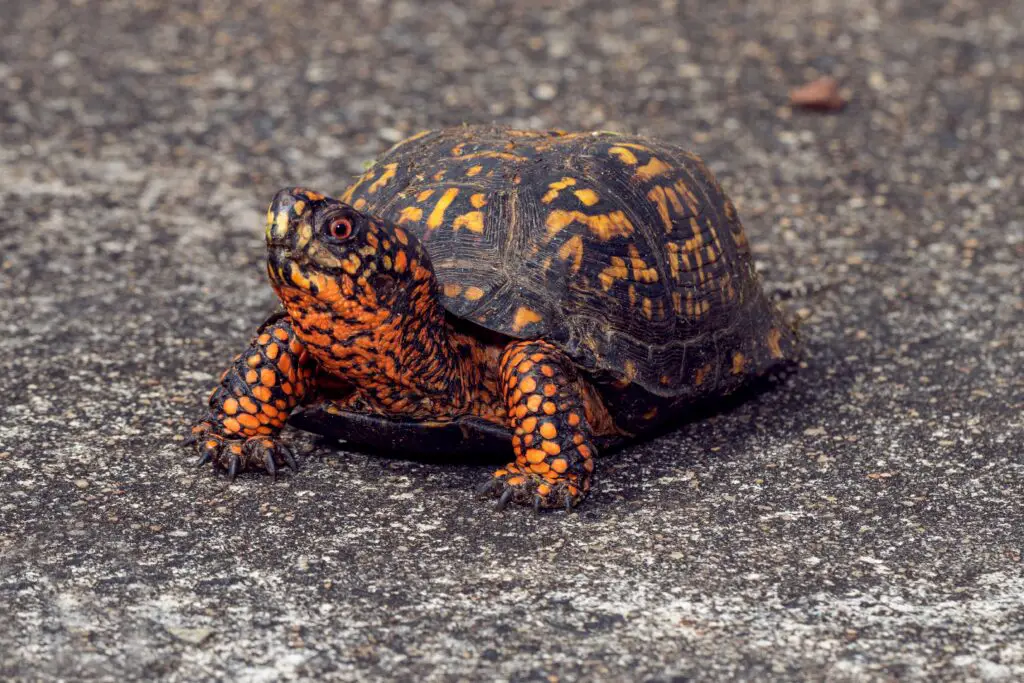
The health and well-being of box turtles greatly depend on selecting the right substrate. As these reptiles spend a significant portion of their lives on the ground, the type of substrate they are housed on can have a considerable impact on their overall health.
Box turtles require a substrate that closely mimics their natural habitat, providing them with comfort, proper humidity levels, and appropriate opportunities for behavior expression. One crucial aspect to consider when choosing a substrate for box turtles is the ability to control humidity levels.
Box turtles are native to various regions with diverse climates, ranging from moist forests to dry grasslands. Therefore, it is essential to recreate an environment that can maintain adequate humidity levels suitable for these creatures’ needs.
A substrate capable of holding moisture while also allowing for proper drainage is ideal as it helps create a microclimate within the enclosure that replicates their natural habitat. Moreover, offering box turtles an appropriate substrate enhances their comfort and stimulates natural behaviors such as digging and burrowing.
These activities are vital for box turtle mental stimulation and physical exercise. The right substrate should be loose enough to facilitate digging without being too compacted or abrasive.
It should also provide support for their weight while still allowing them to move freely underground. Furthermore, the choice of substrate influences waste management and cleanliness within the enclosure.
A suitable substrate will help absorb odors and moisture effectively while minimizing bacterial growth. This not only makes maintenance easier but also contributes to maintaining good air quality within the enclosure, which is crucial for box turtle respiratory health.
Selecting an improper or unsuitable substrate can lead to various problems for box turtles’ overall well-being. For instance, using sand as a primary substrate poses risks of impaction if ingested by the turtles during feeding or accidental consumption while exploring their environment.
Similarly, cedar and pine shavings should be avoided due to potentially toxic aromatic compounds they release which can negatively affect box turtle respiratory systems. It is important to be aware that certain materials that may seem appropriate for other reptiles, such as cat litter or artificial turf, should never be used as substrates for box turtles.
These materials can be harmful if ingested and may cause digestive issues and blockages. Selecting the right substrate for box turtles is of utmost importance for their health and well-being.
It directly impacts their comfort, behavior expression, humidity regulation, waste management, and overall cleanliness within their enclosure. By carefully considering these factors and avoiding unsuitable materials, we can create an environment that closely resembles their natural habitats and promote a thriving lifestyle for these wonderful creatures.
Benefits of choosing the right substrate:
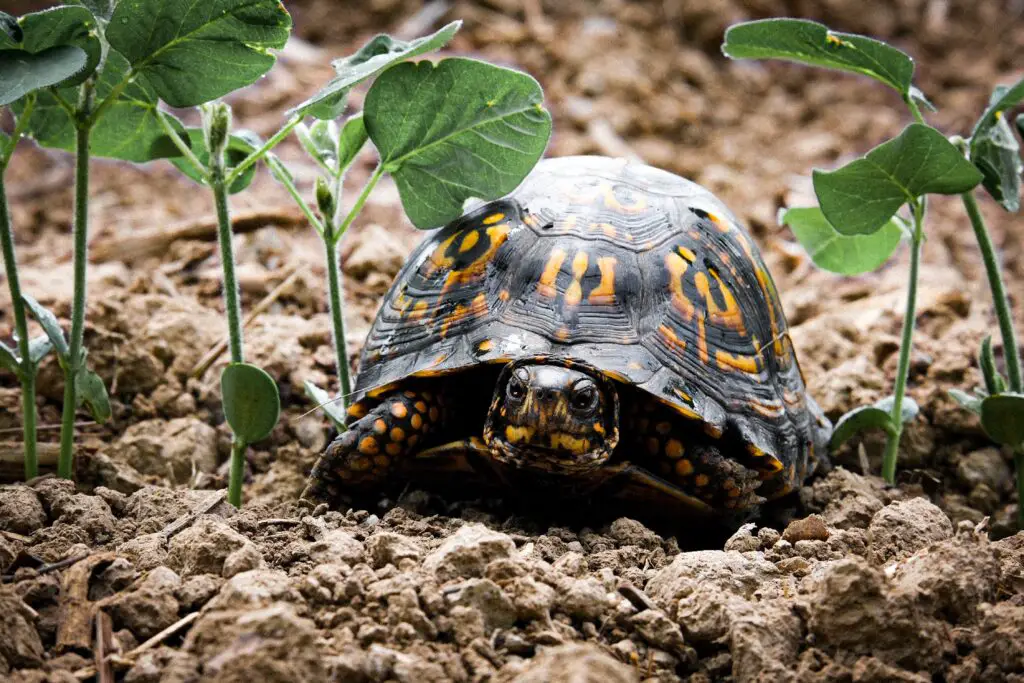
Selecting the right substrate for box turtles is of utmost importance for their health and overall well-being. The substrate not only provides a comfortable surface for the box turtle to walk on but also plays a crucial role in maintaining proper humidity levels, allowing for natural behaviors such as digging and burrowing, and aiding in waste management. Let us delve into the benefits of choosing the right substrate, which will undoubtedly enhance the quality of life for your box turtle.
One key benefit of choosing an appropriate substrate is its ability to regulate humidity levels. Box turtles require a certain level of moisture in their environment to thrive.
By selecting a substrate that retains moisture well, such as coconut coir or sphagnum moss, you can recreate their natural habitat more accurately. Adequate humidity is essential for ensuring healthy shell growth and preventing respiratory issues that may arise from overly dry conditions.
Moreover, providing the right substrate enables box turtles to engage in their natural behaviors. These reptiles have an innate tendency to dig and burrow in search of food or create sheltered spots.
A suitable substrate allows them to exhibit these behaviors within their enclosure, promoting physical exercise and mental stimulation. Cypress mulch or orchard bark are excellent options that allow box turtles to dig without hindrance while still retaining moisture adequately.
In addition to facilitating natural behaviors, selecting the appropriate substrate greatly aids in waste management within the enclosure. A good-quality substrate will absorb moisture from droppings efficiently while minimizing odor build-up.
This creates a cleaner and healthier environment for your box turtle, reducing the risk of bacterial growth and potential infections. Furthermore, choosing a suitable substrate contributes to overall cleanliness within the enclosure by preventing unwanted debris accumulation.
Some substrates have larger particle sizes that make it easier to spot clean feces without disturbing the entire surface area. This not only saves time but also ensures hygiene standards are upheld for your pet’s well-being.
Opting for an ideal substrate helps maintain a visually appealing and aesthetically pleasing enclosure. A substrate that mimics the natural environment of box turtles creates a sense of comfort and security for them, enhancing their overall quality of life.
Natural-looking substrates like topsoil without additives or a mix of sphagnum moss and coconut husk not only offer visual appeal but also provide a safe and inviting environment for your box turtle to thrive in. Choosing the right substrate for your box turtle has numerous benefits.
It regulates humidity levels, allows for natural behaviors like digging and burrowing, aids in waste management and cleanliness, and creates an aesthetically pleasing enclosure. Investing time in researching and selecting the appropriate substrate will undoubtedly contribute to the health, happiness, and overall well-being of your beloved box turtle.
What to Avoid in a Substrate:
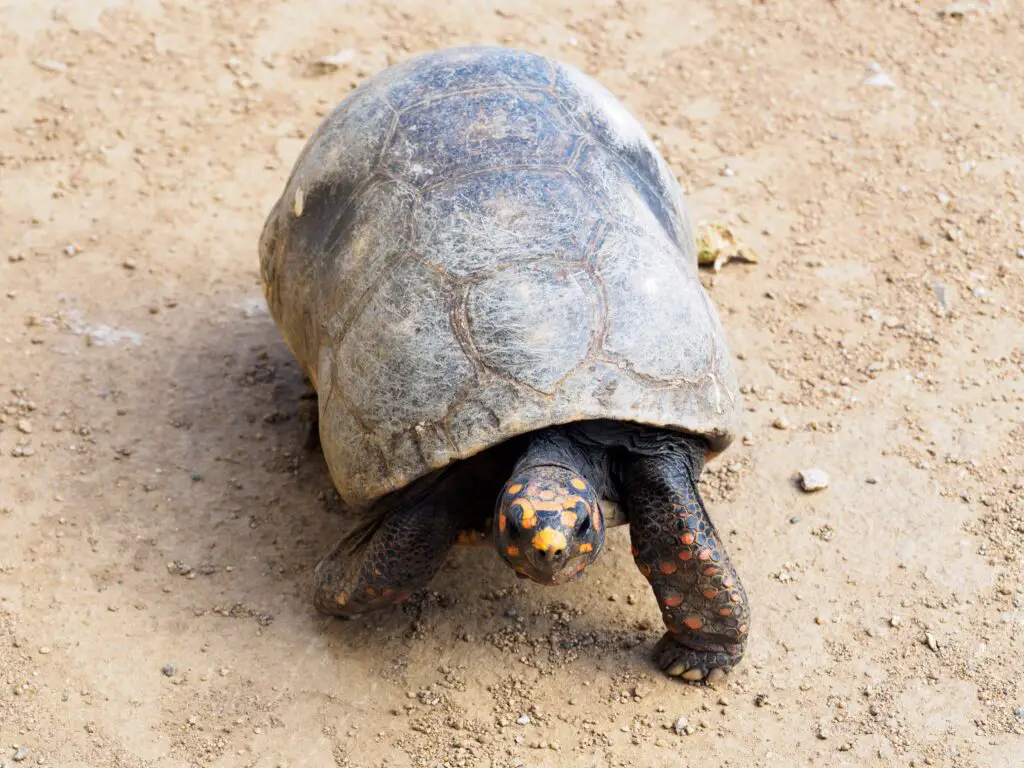
When considering the best substrate for box turtles, it is crucial to be aware of what materials should be avoided. Certain substrates can pose risks to the health and well-being of box turtles, and it is essential to steer clear of them when creating their enclosure. First and foremost, sand should be avoided as a substrate for box turtles.
While sand may seem like a tempting choice due to its natural appearance and ability to hold heat, it presents significant concerns. Box turtles are known to ingest small particles while foraging, and sand can increase their risk of impaction.
The ingestion of sand can lead to blockages in the digestive system, which can be life-threatening for these reptiles. Another type of substrate that should never be used is cedar or pine shavings.
These materials contain aromatic oils that can release harmful chemicals into the air when they come into contact with moisture or heat. Box turtles have sensitive respiratory systems that are easily irritated by these fumes.
Prolonged exposure to cedar or pine shavings as a substrate can result in respiratory issues and other health problems for box turtles. Furthermore, cat litter must also be avoided at all costs when choosing a substrate for box turtles.
Cat litter typically contains additives such as fragrances and clumping agents that are toxic if ingested by reptiles. These chemicals can cause gastrointestinal distress and potentially lead to severe illness or even death in box turtles.
Additionally, it is important not to overlook the potential dangers posed by substrates that contain sharp edges or rough textures. Box turtles may accidentally injure themselves on rough surfaces while burrowing or moving around their enclosure.
Avoid using materials like gravel or large wood chips that could cause harm if stepped on or manipulated by your turtle. While not directly related to substrates themselves but equally important, avoid using any cleaning products in the turtle’s environment that are not specifically labeled as safe for reptiles.
Many household cleaners contain harmful chemicals that can be absorbed through the turtle’s skin or ingested if they come into contact with the substrate. Always opt for reptile-safe cleaners when maintaining the enclosure.
By being aware of and avoiding these substrates and associated materials, you can ensure a safe and healthy environment for your box turtle. Prioritizing their well-being by selecting appropriate substrates will contribute to their overall happiness and longevity in captivity.
Signs that substrate needs to be replaced.
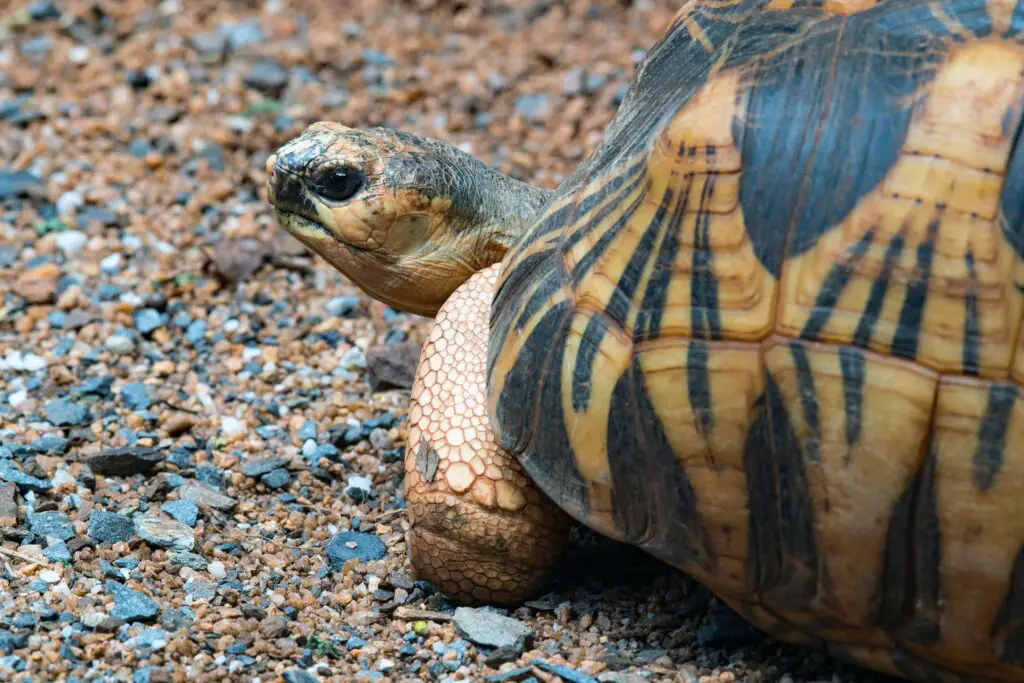
- Foul Odor:
One of the most noticeable signs that indicates the need for substrate replacement is a strong and unpleasant odor emanating from the enclosure.
As box turtles defecate and urinate, their waste gets absorbed into the substrate, leading to bacterial growth and the release of ammonia. If you notice a lingering odor despite regular cleaning, it’s a clear indication that the substrate is no longer able to effectively absorb and control waste.
This can compromise your box turtle’s health and necessitates immediate substrate replacement.
- Mold or Fungal Growth:
Another telltale sign that your box turtle’s substrate requires changing is the presence of mold or fungal growth. High humidity levels combined with organic matter can create an ideal environment for mold spores to proliferate in the enclosure.
When you spot fuzzy patches, discoloration, or unusual formations on the surface of the substrate, it’s crucial to act promptly as exposure to mold can be detrimental to your box turtle’s respiratory system.
- Excessive Moisture:
While maintaining proper humidity levels is important for box turtles, excessive moisture within the enclosure can become problematic if it persists for extended periods. If you notice consistently damp or waterlogged areas in the substrate despite efforts to regulate humidity, it may indicate inadequate drainage or an inability of the current substrate material to retain moisture properly.
Excessively moist conditions increase bacteria growth and create an unsuitable environment for your box turtle, warranting a complete change of substrates.
- Accumulation of Debris:
Over time, debris such as shed skin particles, food remnants, feces, and other organic matter will accumulate within the substrate layer. When this buildup becomes excessive and difficult to remove through regular spot cleaning methods, it suggests that a thorough replacement is necessary.
A dirty environment affects hygiene and attracts pests like mites or flies, which can pose health risks to your box turtle.
- Substrate Decomposition:
Box turtle substrates that consist of organic materials, such as cypress mulch or topsoil, will eventually break down and decompose. As the substrate ages, it loses its structure and becomes compacted, making it less effective at providing a suitable environment for your box turtle.
If the substrate appears heavily compressed or mushy and does not hold its shape well when handled, it is a clear indication that it needs to be replaced with fresh, uncompromised material. Recognizing the signs that indicate the need for substrate replacement is crucial for maintaining a healthy and comfortable environment for your box turtle.
Foul odor, fungal growth, excessive moisture, accumulation of debris, and substrate decomposition are all indicators that the current substrate is no longer suitable for your pet’s needs. By regularly monitoring these signs and promptly addressing them through complete substrate changes when necessary, you can ensure optimal conditions for your beloved box turtle’s overall well-being and longevity.
Guidance on maintaining cleanliness:
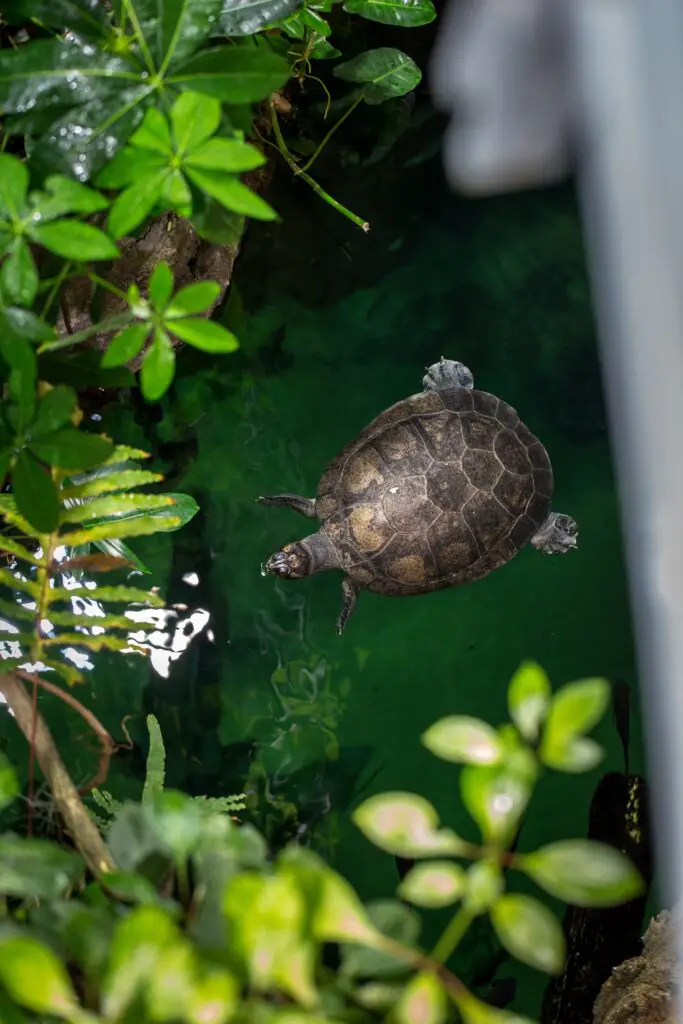
Discover the best substrate for box turtle care in our comprehensive guide. Dive deep into understanding the perfect habitat essentials and ensure your box turtle thrives. Your one-stop resource for all things substrate for box turtle.
Keeping the substrate clean is vital for the health and well-being of box turtles. Proper maintenance not only ensures a hygienic environment but also prevents the accumulation of harmful bacteria and parasites.
Here are some essential guidelines to follow when it comes to maintaining cleanliness in a box turtle enclosure. Regular spot cleaning is crucial to remove any visible waste or debris from the substrate surface.
Using a reptile scooper or a small shovel, carefully scoop out soiled areas, uneaten food, or any other foreign objects. Be thorough in your inspection as box turtles are known to bury their waste, making it sometimes difficult to locate.
In addition to spot cleaning, it is essential to monitor the humidity levels within the enclosure regularly. High humidity can lead to excess moisture in the substrate, promoting bacterial growth and unpleasant odors.
Consider using a humidity gauge or hygrometer to measure humidity levels accurately. If needed, adjust ventilation or misting routines accordingly.
While spot cleaning is effective for day-to-day maintenance, periodically replacing the entire substrate is necessary. The frequency of complete substrate changes depends on various factors such as turtle size, enclosure size, and overall condition of the habitat.
As a general guideline, consider replacing all or at least a significant portion of the substrate every three months. One indicator that signals when it’s time for a full substrate change is an overpowering smell emanating from the enclosure despite regular spot cleaning efforts.
This odor could be due to ammonia buildup from accumulated waste over time. Another sign may be excessive mold growth or fungus appearing within the habitat which suggests an unhealthy environment for your box turtle.
When conducting full substrate changes, always ensure you have prepared appropriate materials beforehand. Remove your box turtle from its enclosure and place it in a secure temporary habitat while you work on refreshing its primary living space.
Before adding new substrate material into the enclosure, thoroughly clean all surfaces with products specifically designed for reptile habitats. By following these guidelines, you can maintain a clean and healthy substrate for your box turtle.
Remember that cleanliness is essential not only for their physical health but also for their overall well-being and contentment in captivity. A consistently clean environment helps to prevent illnesses, fungal infections, and respiratory issues commonly associated with poor husbandry practices.
Essential Tools for Substrate Maintenance
When it comes to maintaining the substrate for box turtles, having the right tools can make the task much easier and more effective. Proper substrate maintenance is crucial for ensuring the health and well-being of your box turtle. In this section, we will explore some essential tools that will assist you in keeping the substrate clean and suitable for your box turtle’s needs.
One indispensable tool for substrate maintenance is a reptile scooper. This specialized instrument is designed to help you remove feces, uneaten food, and other debris from the substrate without disturbing it too much.
A reptile scooper typically has a long handle and a flat shovel-like blade that allows you to carefully scoop up waste materials without disrupting the entire substrate layer. The scooper ensures that you can maintain cleanliness in specific areas without needing to replace the entire substrate.
Another valuable tool for monitoring and maintaining appropriate conditions within your box turtle’s habitat is a humidity gauge. Since maintaining proper humidity levels is essential for many species of turtles, having an accurate gauge will help you monitor these levels closely.
A digital hygrometer or a combination thermometer-hygrometer will provide real-time readings of humidity levels, allowing you to make any necessary adjustments promptly. In addition to scooping waste materials, regularly cleaning and sanitizing your box turtle’s enclosure is important.
However, it is crucial to use a cleaner specifically formulated for reptiles’ safety as many common household cleaners can be harmful or toxic to them. Box turtle safe cleaners are designed with their sensitive respiratory systems in mind and are typically free from harsh chemicals or fragrances that could irritate or harm them.
Alongside these essential tools, it’s also beneficial to have a few basic cleaning supplies on hand when maintaining the substrate for your box turtle. Soft brushes or scrubbers specifically designated for reptile tank use can be used to gently remove any stubborn debris or stains from surfaces within the enclosure without causing damage.
While not necessarily a tool, having a dedicated set of gloves for substrate maintenance can be advantageous. Reptile-safe gloves not only protect your hands from coming into direct contact with waste materials but also help to prevent the transfer of any potential bacteria or parasites that may be present.
By utilizing these essential tools and supplies, you will have everything you need to properly maintain the substrate for your box turtle. Regular cleaning and maintaining appropriate conditions within their enclosure will contribute to a healthy and comfortable living environment, ensuring the well-being of your beloved reptilian companion.
Conclusion:
Caring for a box turtle extends beyond just providing it with food and a sheltered environment; the very ground it treads upon can significantly influence its health and happiness. By carefully selecting the best substrate for your box turtle, you not only replicate a piece of their natural habitat but also contribute to their overall well-being. Remember, as with any pet, understanding and catering to their unique needs is a paramount responsibility. With the right substrate, regular maintenance, and a dash of love, your box turtle can thrive and live a comfortable, content life in captivity. We hope this guide assists you in making the best choice for your shelled friend. Safe and happy turtle-keeping!
Further Reading
How To Keep My Turtle Tank From Smelling
How To Decorate a Turtle Tank: DIY Guide

